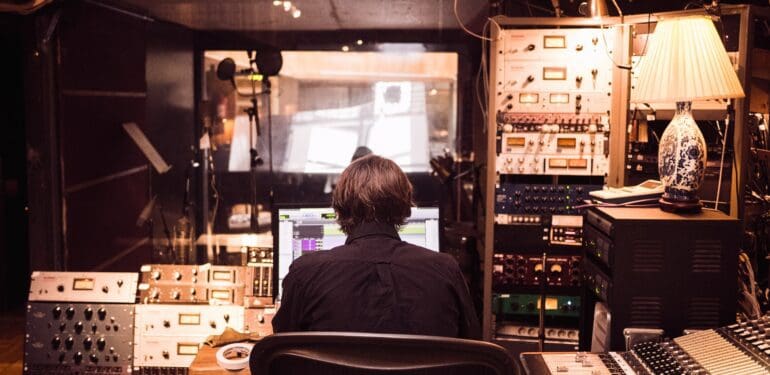Are you an audiophile who’s always wanted to have a studio of your own? If so, this blog post is for you! We’re going to walk you through the steps necessary to set up your own home studio, regardless of your budget. We have you covered whether you’re a novice or a seasoned expert. So let’s get started!
Get Yourself A Decent Microphone
No matter what kind of studio you’re looking to set up, you’re going to need a decent microphone. This is perhaps the most important piece of equipment you’ll need, so it’s worth investing in a good one. There are all sorts of microphones out there, so do your research and find one that suits your needs.
You don’t need to break the bank, but make sure you get something of quality. There are some great choices like Elgato or Hyperx out there that bring studio-quality audio without breaking the bank. If you’re on a tight budget, you can always look for used equipment. Just make sure you test it out before you commit to anything. Once you’ve got your microphone, it’s time to start setting up your studio!
Sound Proof The Room
If you’re serious about your audio, then you need to soundproof your room. This will ensure that outside noise doesn’t interfere with your recordings and that your recordings don’t disturb the peace in your home or neighborhood. There are a few different ways to soundproof a room, and the best method depends on the type of room and the level of soundproofing you need.
If you’re just starting out, then the most important thing is to create a barrier between your recording area and the rest of the room. This can be done by hanging curtains or blankets around your recording space, or by using furniture to create a makeshift wall.
If you’re looking for more serious soundproofing, then you can invest in soundproofing panels or foam. These products will help to absorb and deflect sound, and they can make a big difference in the quality of your recordings. No matter what method you choose, soundproofing is an important step in setting up your own studio.
Make Sure Your Computer Has The Right Specs
You don’t need the latest and greatest computer to get started recording audio, but it is important to make sure that your computer can handle the software you’ll be using. If you’re not sure what specs you need, doing a quick Google search of “what specs do I need for _____” (insert your DAW of choice) will give you a good idea. In general, you’ll want at least an Intel Core i-series processor, and at least eight gigabytes of RAM.
Another important factor to consider is your computer’s hard drive. You’ll want to make sure you have enough space for all your project files, as well as any samples or plugins you might be using. A good rule of thumb is to have at least double the amount of hard drive space as the size of your largest project file.
You’ll Want Good Headphones
Headphones are an important part of any studio. They allow you to hear the nuances in your recordings that you might not be able to hear otherwise. There are a lot of different headphones on the market, so it’s important to choose a pair that is comfortable for you and that sounds good. When selecting headphones, there are a few considerations.
First, you’ll want to make sure that they fit well and are comfortable to wear for long periods of time. Second, you’ll want to make sure that they have a flat frequency response so that you can hear all the frequencies in your recordings. Third, you’ll want to make sure that they have low impedance so that they don’t require a lot of power to drive them.
Fourth, you’ll want to make sure that they’re not too sensitive so that they don’t pick up too much ambient noise. Fifth, you’ll want to make sure that they have a wide frequency response so that you can hear all the frequencies in your recordings.
A Comfortable Chair Will Be Crucial For Long Editing Nights
Different people have different editing styles. Some people like to sit in complete silence, while others need some background noise to help them focus. No matter what your style is, having a comfortable chair is crucial for long nights spent in front of the computer.
You don’t want to constantly shift around or get up to stretch, so make sure you have a chair that supports your back and lets you stay in one position for hours.
In conclusion, setting up your own studio can be a daunting task, but it’s definitely doable with a little bit of planning and research. Just a few things to bear in mind when you first start off. With the right equipment and some soundproofing, you’ll be well on your way to creating great recordings at home.
Happy recording!


